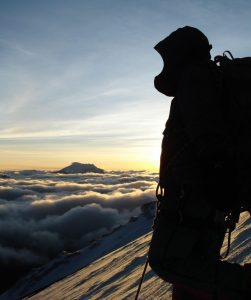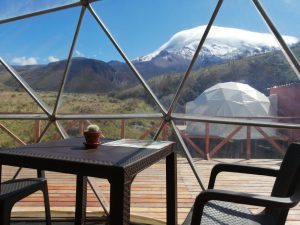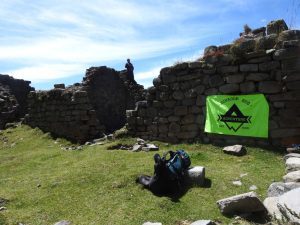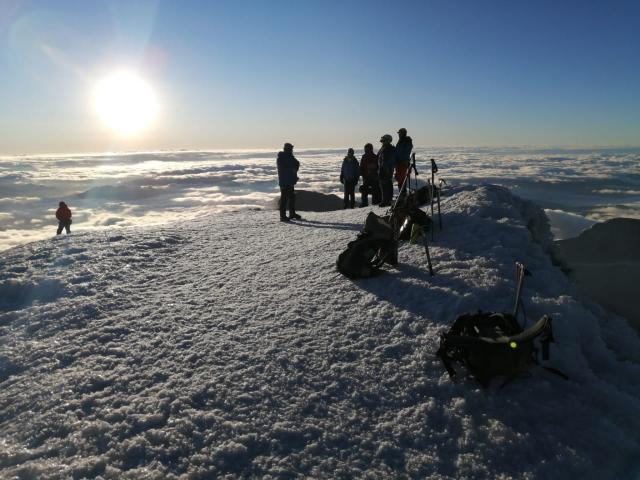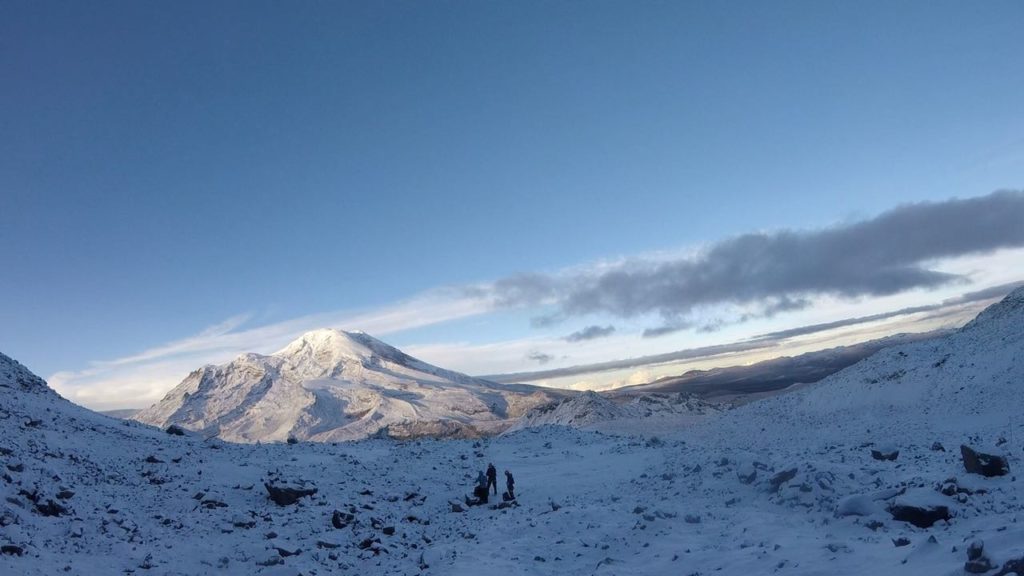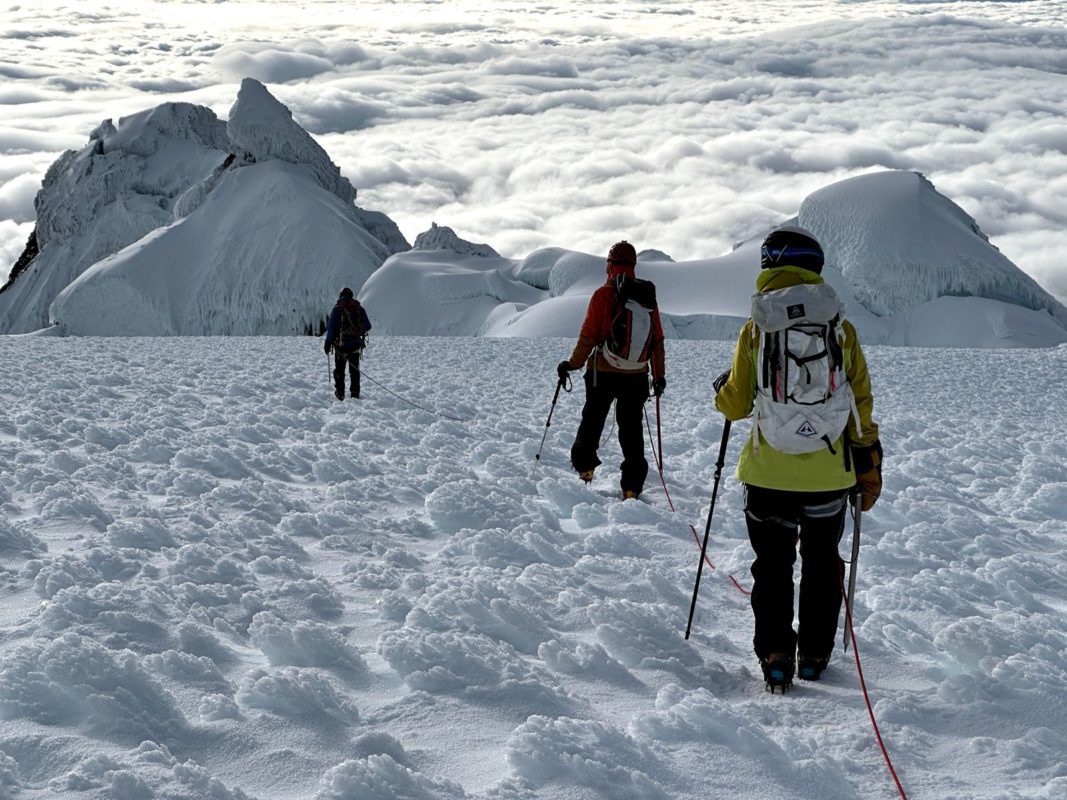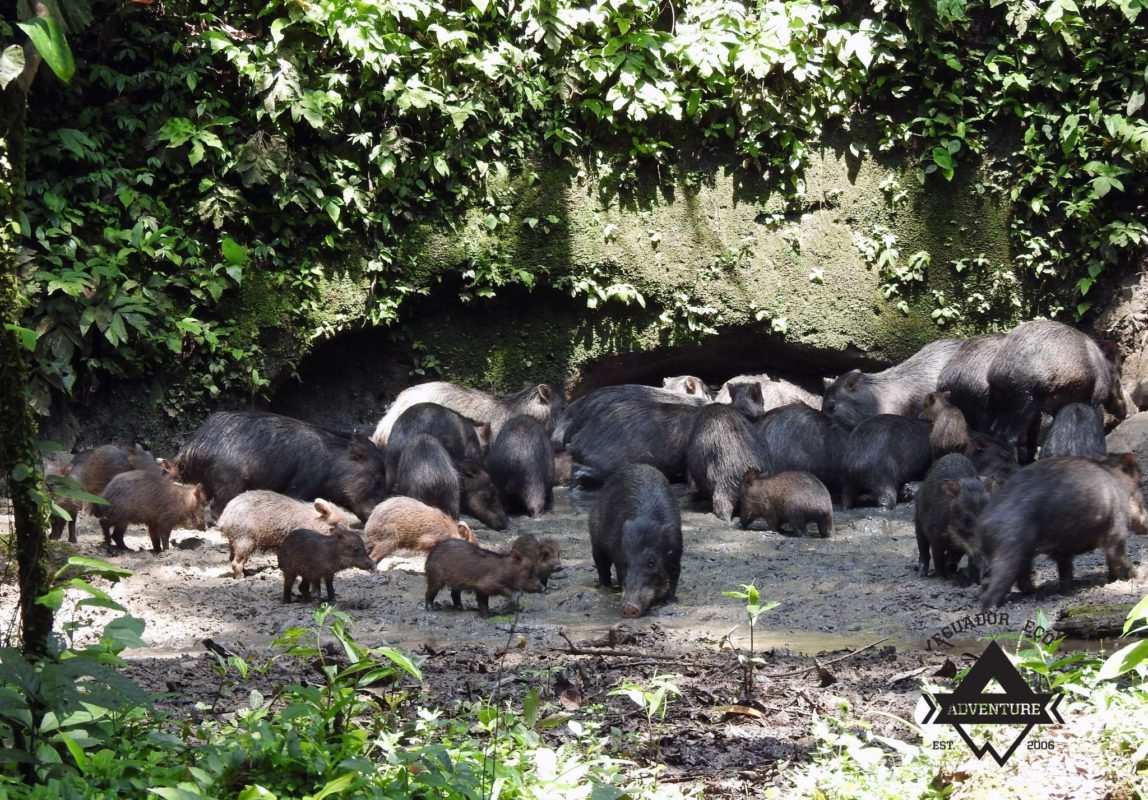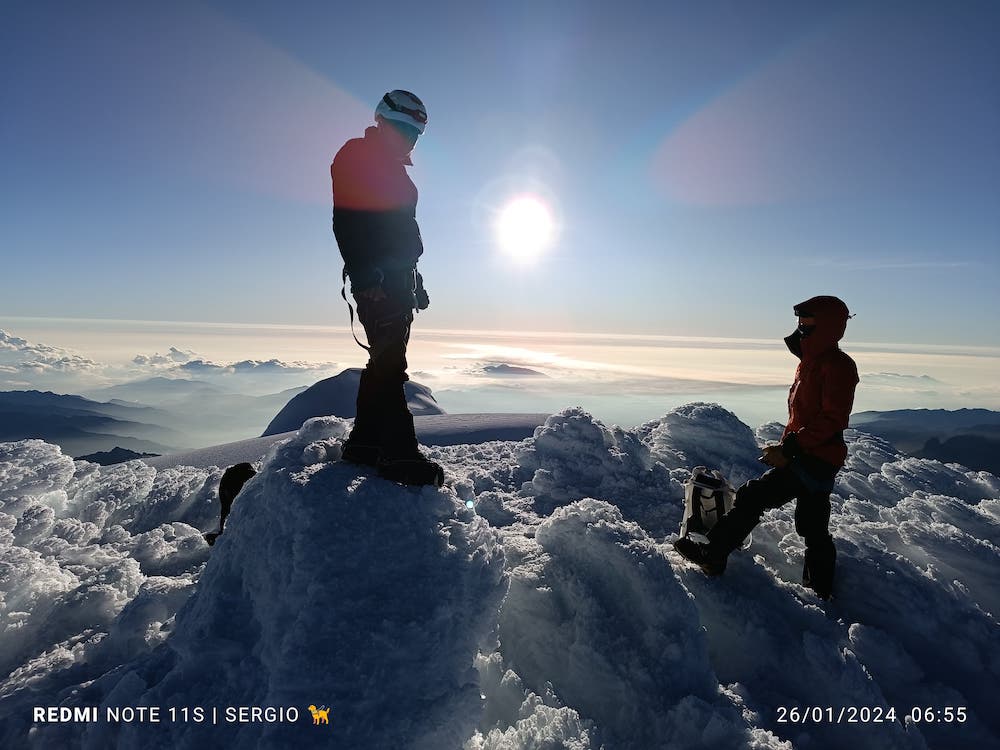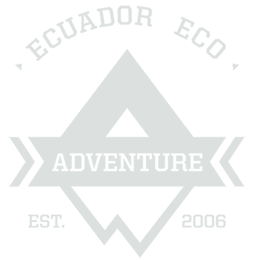No. 1 Agency for Trekking and Climbing in Ecuador
Climb Mount Chimborazo
Mount Chimborazo is the tallest mountain in Ecuador and the Chimborazo climb is non-technical, meaning you get a very high altitude without encountering sheer vertical walls that require technical skills like ice climbing.
The 6,268.2 m (20,565 ft) equatorial summit of Mount Chimborazo is also the closest point to the sun on earth. When measured from the center of the earth instead of sea level it is the highest mountain on the planet.
Climb Cotopaxi
Volcano Cotopaxi is one of the most popular climbs in the South American Andes. The non-technical climb of Ecuador's second highest mountain offers incredible views of the surrounding landscape and other volcanic peaks such as Mount Antisana and Mount Chimborazo.
As an active volcano, Cotopaxi offers climbers the opportunity to conquer not just a mountain but a dynamic geological monolith with breathtaking views of the crater at its summit. The conical shape of Cotopaxi resembles the symmetrical cone of Japan’s renowned Mount Fuji–but at 5,900 meters it is over 2,000 meters taller–and the volcano often influences weather patterns, adding an element of unpredictability and adventure to the climb.
Lagoons of El Altar
There are two treks you can do to El Altar – an overnight trek to the “yellow lagoon” crater lake in the middle of the extinct volcano, or the other spectacular 3 day hike that climbs the green valleys carved by glaciers into the mountainous terrain full of waterfalls and multi-coloured glacial lagoons inside Sangay National Park.
The highest point in the trek reaches the 4,800 meter snowline below El Altars glacial peaks where we will see silver, orange, and blue lagoons as well as spectacular views of Chimborazo and Sangay in clear weather.
Ecuador Condor Trek
The Condor Trek in Ecuador is one of the most famous hikes in the Andes mountains. National Geographic Adventure listed the Ecuadorian Condor Trek in its 2014 Adventure Bucket List and recommended us to guide you on the trek.
The Condor Trek is a 4 day 3 night heavy-duty hike that begins in the Cayambe-Coca Reserve at Papallacta before heading into the Antisana Reserve until it reaches Cotopaxi National Park with a top altitude of 4,500m / 14,763ft at the base of Volcano Sincholagua.
Upcoming trips
OFFICE OPENING TIMES
- Mon
- 8:00-19:00
- Tue
- 8:00-19:00
- Wed
- 8:00-19:00
- Thu
- 8:00-19:00
- Fri
- 8:00-19:00
- Sat
- 8:00-16:00
- Sun
- 8:00-16:00
Follow us on Facebook
Climb Carihuairazo
The trek begins at around 3,500 meters above sea level, and the climb to the summit of Carihuairazo reaches an altitude of 5,020 meters. The trek and climb take about two to three days, depending on the pace of the group and the weather conditions. From the summit, you will be rewarded with panoramic views of the Ecuadorian Andes, including several nearby volcanoes such as Chimborazo, Tungurahua, and Sangay.
Climb Antisana
Antisana Volcano is an active stratovolcano nestled in the eastern Andes of Ecuador within the Antisana Ecological Reserve. The peak of its vast ice cap stands tall at 5,704 meters (18,714 feet) above sea level, which means Antisana claims the title of the fourth-highest volcano in Ecuador, and boasts its status as one of Ecuador’s most heavily glaciated peaks. The region surrounding the volcano teems with diverse flora and fauna, resiliently adapted to the harsh high-altitude environment, and also makes up part of the world famous Condor Trek.
Yasuni Amazon Tours
This Amazon Tour takes you to an area which has the highest concentration of floral and faunal species anywhere in the world, located at the confluence between the Indillama river and the Napo River, a major tributary of the mighty río Amazonas. The Yasuní became the most richly biodiverse rainforest because of its warm climate during the Pleistocene era, where its location sheltered by Andes volcanoes made it a hotspot for biodiversity and animal migration during the last great extinction event.
Testimonials
El pasaje es inmejorable! El domo en condiciones perfectas y a los pies del taita Chimborazo! Para hospedarse aqui tiene que gustarte mucho el frío. La atención de los anfitriones es estupenda y 100% recomendable!Rubén
During my stay in Ecuador, I was fortunate enough to have the opportunity to partake in a two-day horseback riding trip through the countryside surrounding Mt. Chimborazo. The trip was absolutely fabulous! There were six of us total, one good friend of mine from Texas, and two other travellers, one from Australia and the other from China. It was wonderful to meet other fellow travellers as we got along really well. I was absolutely amazed at the beauty of the surrounding hills and of course Chimborazo in the distance.Claire Buck
I went with Ecuador Eco Adventure on a 2 day horse trek around Chimborazo. I had an absolute blast. The horse riding was amazing. The highlands were beautiful. Ecuador Eco Adventure had everything ready for us, for less than half the price of other tours. We had meals, transportation, lodging, and great guides. We visited Salinas and thermal hot springs. It was an all around great adventure. Not to mention the night before both trips, our guide stayed up until after 2 AM to get me from the bus station without complaint.Aurita Maldonado
Unique place in the foothills of Chimborazo All was very good. The space is wide, the bed is comfortable, it has a good view and the location is very good!Paulina
"The scenery can't be beat! The dome in perfect condition and at the foot of the grandpa Chimborazo! To stay here you have to really like cold landscapes. The attention of the hosts is great and 100% recommended!"Rubén
Lugar único en las faldas de Chimborazo Todo estuvo muy bien. El espacio es amplio, la cama es cómoda, tiene una buena vista y la ubicación es muy buena!Paulina
Climb Cayambe
Climbing Cayambe is an exhilarating adventure set amidst the breathtaking landscapes of the Ecuadorian Andes. As the third-highest peak in Ecuador, Cayambe presents a formidable yet enticing challenge to climbers from around the world. Rising majestically to an impressive height of 5,790 meters (18,996 feet), this snow-capped volcano offers a blend of stunning vistas and thrilling ascents.
Inca Trail to Ingapirka
The Inca Trail once connected the Incan empire’s northern capital Quito with its southern capital Cuzco in Peru to move trade, diplomatic messengers, as well as large marching armies during the Incan civil war.
After centuries of war the Inca Trail was largely destroyed or buried, but this section through Sangay National Park is one of the last well preserved remnants of great historic value and follows the footsteps of the revolutionary leader Commander Sucre's army as they marched over the Andes to Cuenca during the war of independence against Spain.
Inca Trail itinerary & Prices
